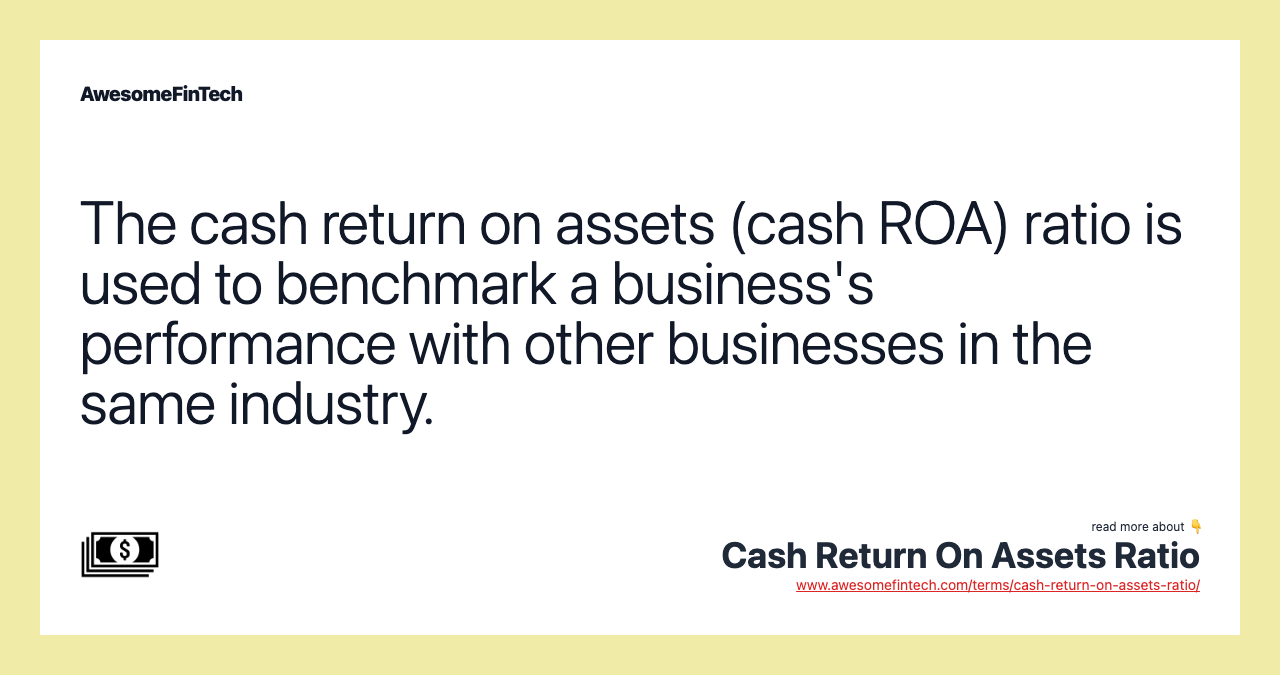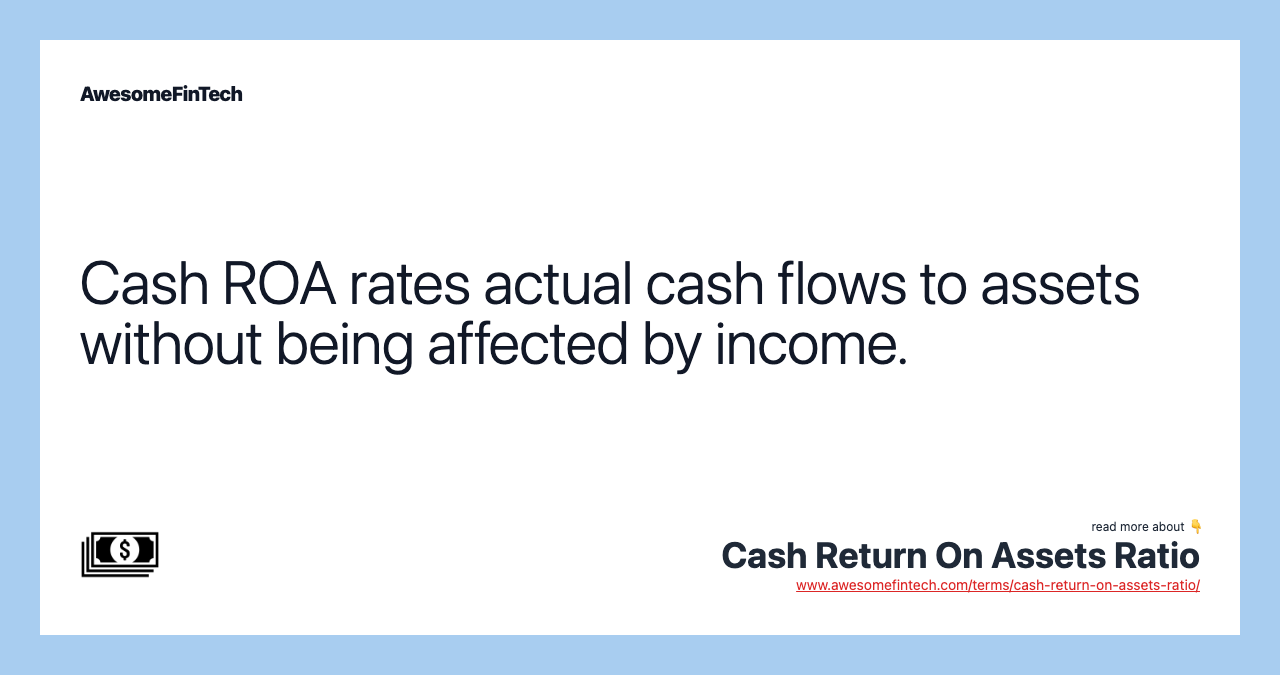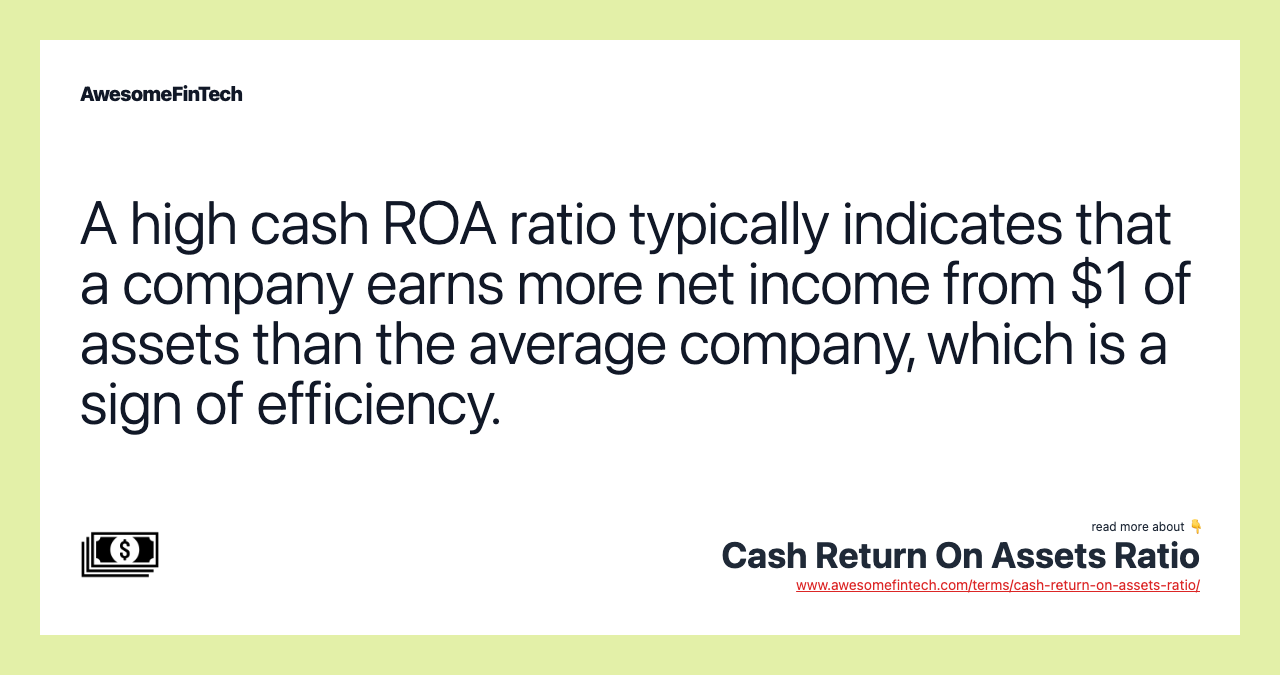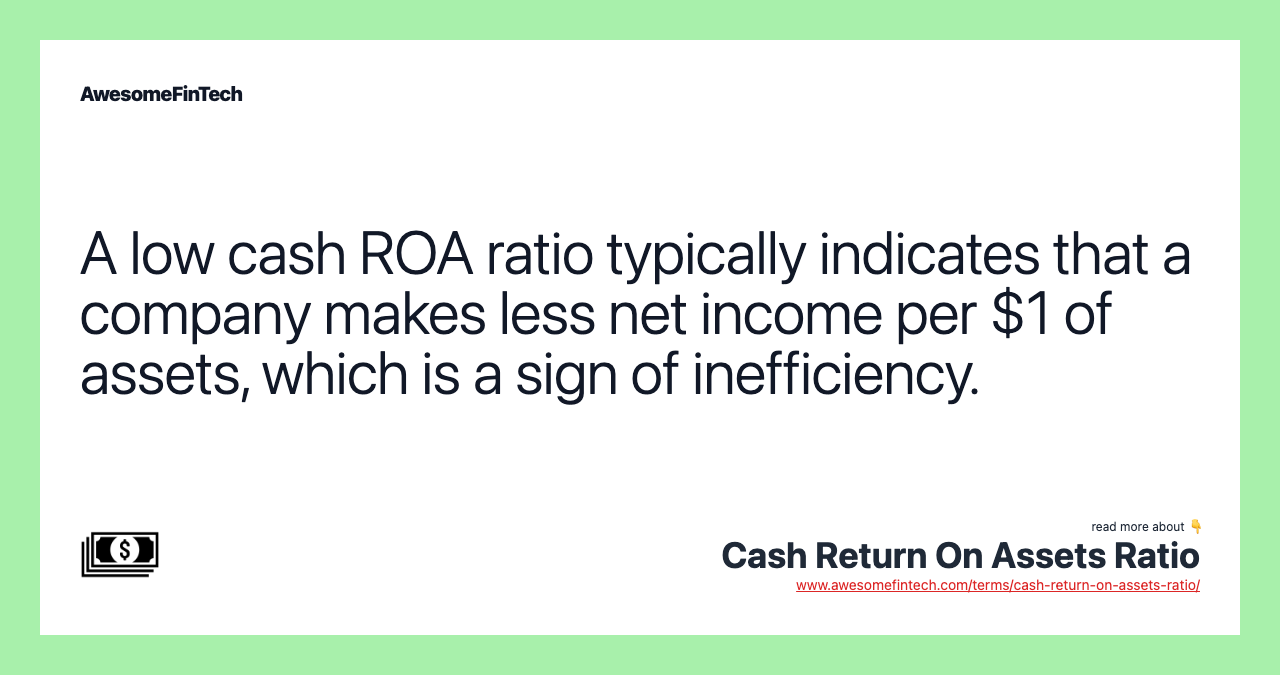Cash Return On Assets Ratio
The cash return on assets (cash ROA) ratio is used to benchmark a business's performance with other businesses in the same industry. A high cash ROA ratio typically indicates that a company earns more net income from $1 of assets than the average company, which is a sign of efficiency. A high cash ROA ratio means the company earns more net income from $1 of assets than the average company, which is a sign of efficiency. A low cash ROA ratio typically indicates that a company makes less net income per $1 of assets, which is a sign of inefficiency. A low cash ROA ratio means a company makes less net income per $1 of assets, which is a sign of inefficiency.

What Is the Cash Return On Assets Ratio?
The cash return on assets (cash ROA) ratio is used to benchmark a business's performance with other businesses in the same industry. It is an efficiency ratio that rates actual cash flows to company assets without being affected by income recognition or income measurements. The ratio can be used internally by the company's analysts or by potential and current investors.





Understanding the Cash Return On Assets Ratio
Fundamental analysts believe a stock can be undervalued or overvalued. That is, fundamental analysts believe in-depth analysis can help increase portfolio returns. Fundamental analysts uses a variety of tools, including ratios, to assess portfolio returns. Ratios help analysts compare and contrast data points, such as return on assets (ROA) and cash ROA. When these two ratios diverge, it is a sign that cash flow and net income are not aligned, which is a point of concern.
ROA vs. Cash ROA
Return on assets is calculated by dividing net income by average total assets.
Net income ÷ Total average assets = Cash return on assets
The answer tells financial analysts how well a company is managing assets. In other words, ROA tells analysts how much each dollar of assets is generating in earnings.
A high cash ROA ratio means the company earns more net income from $1 of assets than the average company, which is a sign of efficiency. A low cash ROA ratio means a company makes less net income per $1 of assets, which is a sign of inefficiency.
The issue is that net income is not always aligned with cash flow. As a solution, analysts use cash ROA, which divides cash flows from operations (CFO) by total assets. Cash flow from operations is specifically designed to reconcile the difference between net income and cash flow. In this way, it is a more accurate number to use in the calculation of ROA than net income.
Example of Cash Flow and Net Income Misalignment
As an example, if Company A has a net income of $10 million and total assets of $50 million, ROA is 20%. Company A also has high sales growth due to a new financing program that gives all customers 100% financing. As a result, net income is high, but the increase in net income is the result of an increase in credit sales. These credit sales increased sales and net income, but the company has received no cash for sales.
Cash flows from operations, a line item that can be found on the cash flow statement shows the company has $5 million in credit sales. Cash flows from operations deducts this $5 million in credit sales from net income. As a result, cash ROA is calculated by dividing $5 million by $50 million, which is 10%. In actuality, assets generated a lower amount of "real" cash earnings than originally thought.
Related terms:
Asset Performance
Asset performance refers to a business's ability to take operational resources, manage them, and produce profitable returns. read more
Cash Flow From Operating Activities (CFO)
Cash Flow From Operating Activities (CFO) indicates the amount of cash a company generates from its ongoing, regular business activities. read more
Cash Flow
Cash flow is the net amount of cash and cash equivalents being transferred into and out of a business. read more
Current Ratio
The current ratio is a liquidity ratio that measures a company's ability to cover its short-term obligations with its current assets. read more
Efficiency Ratio
The efficiency ratio is used to analyze how well a company utilizes its assets and liabilities internally. read more
Financial Statement Analysis & Examples
Financial statement analysis is the process of analyzing a company's financial statements for decision-making purposes. read more
Financial Statements , Types, & Examples
Financial statements are written records that convey the business activities and the financial performance of a company. Financial statements include the balance sheet, income statement, and cash flow statement. read more
Financial Performance
Financial performance measures how well a firm uses assets from operations and generates revenues. Read how to analyze financial performance before investing. read more
Fundamental Analysis
Fundamental analysis is a method of measuring a stock's intrinsic value. Analysts who follow this method seek out companies priced below their real worth. read more